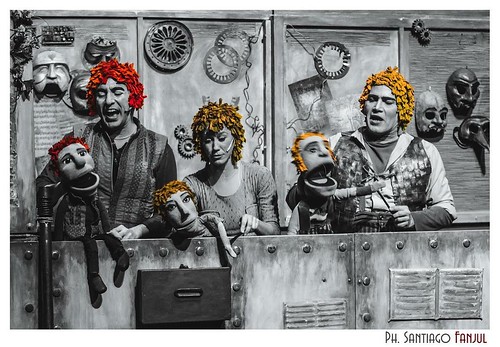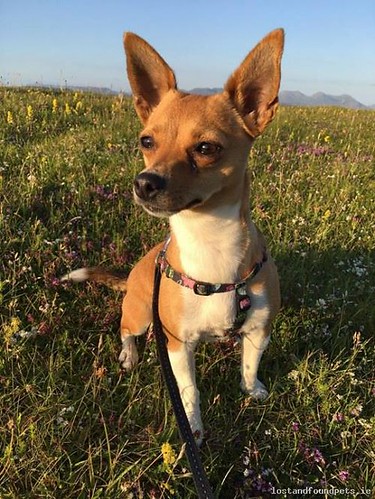Hexamerin 1 hexamerin 2* b-glycosidase* bicaudal D CYP4U3v1 GGPP synthase cytochrome oxidase III*Gene ID Unigene30435 Unigene34583 Unigene34266 Unigene55044 15481974 CL6118.Contig1 Unigene57705 UnigeneLength (bp) 374 2575 1238 1072 1998 526Subject ID BAG48838.1 AAU20852.2 AAL40863.1 EFA07458.1 ABB86762.2 BAJ79290.1 YP_002650710.Species Reticulitermes speratus Reticulitermes flavipes Rhyparobia maderae Tribolium castaneum Reticulitermes flavipes Reticulitermes speratus Dermatophagoides pteronyssinusE value 2E-50 0 4E-76 1E-132 0 4E-40 6E-*denotes a gene selected for qPCR. doi:10.1371/journal.pone.0050383.tTranscriptome and Gene Expression in TermiteFigure 8. The qPCR analysis of putative genes involved in caste differentiation and aggression. The x-axis indicates three different castes. The y-axis indicates the relative expression value of uingene. (A) mRNA relative expression values for hexamerin 2. (B) mRNA relative expression values for b-glycosidase. (C) mRNA relative expression values for bicaudal D. (D) mRNA relative expression values for Cyp6a20. Letters  above each bar denote significantly different groups. Significant differences were identified by a one-way ANOVA with means separated using Tukey’s HSD (P,0.05). doi:10.1371/journal.pone.0050383.gthe coding region sequences of unigenes, and then the coding region sequences were translated into amino sequences with the standard codon table. So both the nucleotide sequences (59?9) and amino sequences of the unigene coding region were acquired. Unigenes that cannot be aligned to any database are SR-3029 biological activity scanned by ESTScan, producing nucleotide sequence (59?9) direction and amino sequence of the predicted coding region [28].Mononucleotide repeats were ignored because it was difficult to distinguish genuine mononucleotide repeats from polyadenylation products and single nucleotide stretch errors generated by sequencing.Gene Mining and Quantitative Real Time PCRTotal RNA was extracted from heads of workers, soldiers and larvae using TRIzol following the manufacturer’s protocol. Approximately 1 mg of DNase I-treated total RNA was converted into single-stranded cDNA using a PrimeScript RT regent reagent Kit (order 125-65-5 perfect real time) (TaKaRa, Dalian, China). The cDNA products were then diluted 80-fold with deionized water before use as a template in real-time PCR. The quantitative reaction wasEST-SSR DetectionPutative SSR markers were predicted among the 116,885 unigenes using Serafer [49]. The parameters were adjusted for identification of perfect di-, tri-, tetra-, penta-, and hexanucleotide motifs with a minimum of 6, 5, 4, 4, and 4 repeats, respectively. Table 4. Putative genes involved in aggression.Gene Annotation Cyp6a*Gene ID Unigene34391 Unigene3655 CL523.Contig1 Unigene49370 Unigene25977 UnigeneLength (bp) 2677 398 1439 1058 750Subject ID CP6A2_DROME SC6A2_MOUSE GP119_RAT SC6A4_DROME OCTB2_DROME BAB40325.Species Drosophila melanogaster Mus musculus Rattus norvegicus Drosophila melanogaster
above each bar denote significantly different groups. Significant differences were identified by a one-way ANOVA with means separated using Tukey’s HSD (P,0.05). doi:10.1371/journal.pone.0050383.gthe coding region sequences of unigenes, and then the coding region sequences were translated into amino sequences with the standard codon table. So both the nucleotide sequences (59?9) and amino sequences of the unigene coding region were acquired. Unigenes that cannot be aligned to any database are SR-3029 biological activity scanned by ESTScan, producing nucleotide sequence (59?9) direction and amino sequence of the predicted coding region [28].Mononucleotide repeats were ignored because it was difficult to distinguish genuine mononucleotide repeats from polyadenylation products and single nucleotide stretch errors generated by sequencing.Gene Mining and Quantitative Real Time PCRTotal RNA was extracted from heads of workers, soldiers and larvae using TRIzol following the manufacturer’s protocol. Approximately 1 mg of DNase I-treated total RNA was converted into single-stranded cDNA using a PrimeScript RT regent reagent Kit (order 125-65-5 perfect real time) (TaKaRa, Dalian, China). The cDNA products were then diluted 80-fold with deionized water before use as a template in real-time PCR. The quantitative reaction wasEST-SSR DetectionPutative SSR markers were predicted among the 116,885 unigenes using Serafer [49]. The parameters were adjusted for identification of perfect di-, tri-, tetra-, penta-, and hexanucleotide motifs with a minimum of 6, 5, 4, 4, and 4 repeats, respectively. Table 4. Putative genes involved in aggression.Gene Annotation Cyp6a*Gene ID Unigene34391 Unigene3655 CL523.Contig1 Unigene49370 Unigene25977 UnigeneLength (bp) 2677 398 1439 1058 750Subject ID CP6A2_DROME SC6A2_MOUSE GP119_RAT SC6A4_DROME OCTB2_DROME BAB40325.Species Drosophila melanogaster Mus musculus Rattus norvegicus Drosophila melanogaster  Drosophila melanogaster Canis lupus familiarisE value 3E-112 1E-25 4E-17 0 4E-27 1E-dopamine transporter 5-HT receptor 5-HT transporter octopamine receptor monoamine oxidase A (MAOA) *denotes a gene selected for qPCR. doi:10.1371/journal.pone.0050383.tTranscriptome and Gene Expression in Termiteperformed on a My IQTM 2 Two color Real-time PCR Detection System (Bio-Rad, USA) using SYBR Premix Ex TaqTM II (TaKaRa, Dalian, China). The reaction mixture (20 mL) contained 26SYBR Premix Ex TaqTM II 10 mL, 0.4 mM each of the.Hexamerin 1 hexamerin 2* b-glycosidase* bicaudal D CYP4U3v1 GGPP synthase cytochrome oxidase III*Gene ID Unigene30435 Unigene34583 Unigene34266 Unigene55044 15481974 CL6118.Contig1 Unigene57705 UnigeneLength (bp) 374 2575 1238 1072 1998 526Subject ID BAG48838.1 AAU20852.2 AAL40863.1 EFA07458.1 ABB86762.2 BAJ79290.1 YP_002650710.Species Reticulitermes speratus Reticulitermes flavipes Rhyparobia maderae Tribolium castaneum Reticulitermes flavipes Reticulitermes speratus Dermatophagoides pteronyssinusE value 2E-50 0 4E-76 1E-132 0 4E-40 6E-*denotes a gene selected for qPCR. doi:10.1371/journal.pone.0050383.tTranscriptome and Gene Expression in TermiteFigure 8. The qPCR analysis of putative genes involved in caste differentiation and aggression. The x-axis indicates three different castes. The y-axis indicates the relative expression value of uingene. (A) mRNA relative expression values for hexamerin 2. (B) mRNA relative expression values for b-glycosidase. (C) mRNA relative expression values for bicaudal D. (D) mRNA relative expression values for Cyp6a20. Letters above each bar denote significantly different groups. Significant differences were identified by a one-way ANOVA with means separated using Tukey’s HSD (P,0.05). doi:10.1371/journal.pone.0050383.gthe coding region sequences of unigenes, and then the coding region sequences were translated into amino sequences with the standard codon table. So both the nucleotide sequences (59?9) and amino sequences of the unigene coding region were acquired. Unigenes that cannot be aligned to any database are scanned by ESTScan, producing nucleotide sequence (59?9) direction and amino sequence of the predicted coding region [28].Mononucleotide repeats were ignored because it was difficult to distinguish genuine mononucleotide repeats from polyadenylation products and single nucleotide stretch errors generated by sequencing.Gene Mining and Quantitative Real Time PCRTotal RNA was extracted from heads of workers, soldiers and larvae using TRIzol following the manufacturer’s protocol. Approximately 1 mg of DNase I-treated total RNA was converted into single-stranded cDNA using a PrimeScript RT regent reagent Kit (perfect real time) (TaKaRa, Dalian, China). The cDNA products were then diluted 80-fold with deionized water before use as a template in real-time PCR. The quantitative reaction wasEST-SSR DetectionPutative SSR markers were predicted among the 116,885 unigenes using Serafer [49]. The parameters were adjusted for identification of perfect di-, tri-, tetra-, penta-, and hexanucleotide motifs with a minimum of 6, 5, 4, 4, and 4 repeats, respectively. Table 4. Putative genes involved in aggression.Gene Annotation Cyp6a*Gene ID Unigene34391 Unigene3655 CL523.Contig1 Unigene49370 Unigene25977 UnigeneLength (bp) 2677 398 1439 1058 750Subject ID CP6A2_DROME SC6A2_MOUSE GP119_RAT SC6A4_DROME OCTB2_DROME BAB40325.Species Drosophila melanogaster Mus musculus Rattus norvegicus Drosophila melanogaster Drosophila melanogaster Canis lupus familiarisE value 3E-112 1E-25 4E-17 0 4E-27 1E-dopamine transporter 5-HT receptor 5-HT transporter octopamine receptor monoamine oxidase A (MAOA) *denotes a gene selected for qPCR. doi:10.1371/journal.pone.0050383.tTranscriptome and Gene Expression in Termiteperformed on a My IQTM 2 Two color Real-time PCR Detection System (Bio-Rad, USA) using SYBR Premix Ex TaqTM II (TaKaRa, Dalian, China). The reaction mixture (20 mL) contained 26SYBR Premix Ex TaqTM II 10 mL, 0.4 mM each of the.
Drosophila melanogaster Canis lupus familiarisE value 3E-112 1E-25 4E-17 0 4E-27 1E-dopamine transporter 5-HT receptor 5-HT transporter octopamine receptor monoamine oxidase A (MAOA) *denotes a gene selected for qPCR. doi:10.1371/journal.pone.0050383.tTranscriptome and Gene Expression in Termiteperformed on a My IQTM 2 Two color Real-time PCR Detection System (Bio-Rad, USA) using SYBR Premix Ex TaqTM II (TaKaRa, Dalian, China). The reaction mixture (20 mL) contained 26SYBR Premix Ex TaqTM II 10 mL, 0.4 mM each of the.Hexamerin 1 hexamerin 2* b-glycosidase* bicaudal D CYP4U3v1 GGPP synthase cytochrome oxidase III*Gene ID Unigene30435 Unigene34583 Unigene34266 Unigene55044 15481974 CL6118.Contig1 Unigene57705 UnigeneLength (bp) 374 2575 1238 1072 1998 526Subject ID BAG48838.1 AAU20852.2 AAL40863.1 EFA07458.1 ABB86762.2 BAJ79290.1 YP_002650710.Species Reticulitermes speratus Reticulitermes flavipes Rhyparobia maderae Tribolium castaneum Reticulitermes flavipes Reticulitermes speratus Dermatophagoides pteronyssinusE value 2E-50 0 4E-76 1E-132 0 4E-40 6E-*denotes a gene selected for qPCR. doi:10.1371/journal.pone.0050383.tTranscriptome and Gene Expression in TermiteFigure 8. The qPCR analysis of putative genes involved in caste differentiation and aggression. The x-axis indicates three different castes. The y-axis indicates the relative expression value of uingene. (A) mRNA relative expression values for hexamerin 2. (B) mRNA relative expression values for b-glycosidase. (C) mRNA relative expression values for bicaudal D. (D) mRNA relative expression values for Cyp6a20. Letters above each bar denote significantly different groups. Significant differences were identified by a one-way ANOVA with means separated using Tukey’s HSD (P,0.05). doi:10.1371/journal.pone.0050383.gthe coding region sequences of unigenes, and then the coding region sequences were translated into amino sequences with the standard codon table. So both the nucleotide sequences (59?9) and amino sequences of the unigene coding region were acquired. Unigenes that cannot be aligned to any database are scanned by ESTScan, producing nucleotide sequence (59?9) direction and amino sequence of the predicted coding region [28].Mononucleotide repeats were ignored because it was difficult to distinguish genuine mononucleotide repeats from polyadenylation products and single nucleotide stretch errors generated by sequencing.Gene Mining and Quantitative Real Time PCRTotal RNA was extracted from heads of workers, soldiers and larvae using TRIzol following the manufacturer’s protocol. Approximately 1 mg of DNase I-treated total RNA was converted into single-stranded cDNA using a PrimeScript RT regent reagent Kit (perfect real time) (TaKaRa, Dalian, China). The cDNA products were then diluted 80-fold with deionized water before use as a template in real-time PCR. The quantitative reaction wasEST-SSR DetectionPutative SSR markers were predicted among the 116,885 unigenes using Serafer [49]. The parameters were adjusted for identification of perfect di-, tri-, tetra-, penta-, and hexanucleotide motifs with a minimum of 6, 5, 4, 4, and 4 repeats, respectively. Table 4. Putative genes involved in aggression.Gene Annotation Cyp6a*Gene ID Unigene34391 Unigene3655 CL523.Contig1 Unigene49370 Unigene25977 UnigeneLength (bp) 2677 398 1439 1058 750Subject ID CP6A2_DROME SC6A2_MOUSE GP119_RAT SC6A4_DROME OCTB2_DROME BAB40325.Species Drosophila melanogaster Mus musculus Rattus norvegicus Drosophila melanogaster Drosophila melanogaster Canis lupus familiarisE value 3E-112 1E-25 4E-17 0 4E-27 1E-dopamine transporter 5-HT receptor 5-HT transporter octopamine receptor monoamine oxidase A (MAOA) *denotes a gene selected for qPCR. doi:10.1371/journal.pone.0050383.tTranscriptome and Gene Expression in Termiteperformed on a My IQTM 2 Two color Real-time PCR Detection System (Bio-Rad, USA) using SYBR Premix Ex TaqTM II (TaKaRa, Dalian, China). The reaction mixture (20 mL) contained 26SYBR Premix Ex TaqTM II 10 mL, 0.4 mM each of the.
Potassium channel potassiun-channel.com
Just another WordPress site
